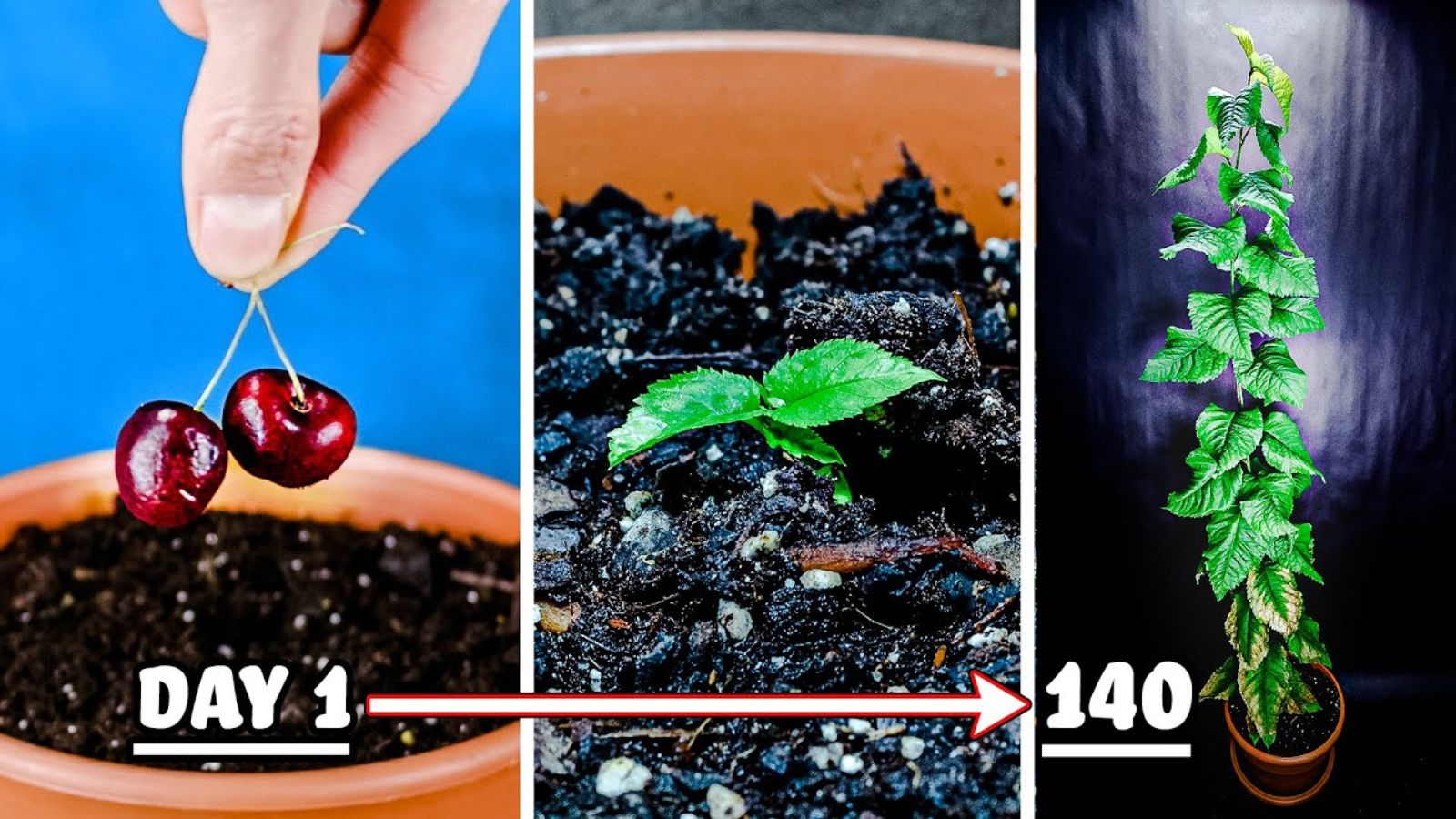Cherry trees are a favorite among gardeners due to their beautiful blossoms and delicious fruit. However, traditional methods of growing cherry trees can take years before yielding fruit, and many gardeners struggle with slow growth or weak trees. Fortunately, a new technique for growing cherry trees has been discovered, allowing gardeners to speed up the process and cultivate healthier, more productive trees.
Why Use This New Technique?
Traditional cherry tree cultivation methods involve lengthy germination and growth periods. Many gardeners face challenges such as poor seed germination, weak root systems, and susceptibility to pests and diseases. This innovative method simplifies the process, increases seed viability, and strengthens the tree from an early stage, leading to higher yields and better growth.
By following these steps, you can successfully grow a cherry tree in less time and with less hassle!
Step-by-Step Guide to the New Cherry Tree Growing Technique
1. Choosing the Right Seeds or Seedlings
The first step in successfully growing a cherry tree using this technique is selecting high-quality seeds or seedlings.
- If using seeds, ensure they come from organic, ripe cherries. Avoid seeds from hybrid varieties as they may not produce true-to-type fruit.
- For a faster start, opt for young cherry tree saplings from a trusted nursery.
2. Cold Stratification for Faster Germination
Cherry seeds have a natural dormancy period and require cold treatment to stimulate germination. This process mimics winter conditions and helps break dormancy.
How to do it:
- Clean the cherry seeds thoroughly, removing any fruit residue.
- Wrap them in a damp paper towel and place them inside a plastic bag.
- Store the bag in the refrigerator for 8 to 10 weeks at a temperature of around 35–40°F (1–4°C).
- Check periodically to ensure the towel remains moist but not soaked.
- After the stratification period, the seeds should show signs of sprouting.
3. Preparing the Ideal Soil Mix
Cherry trees thrive in well-draining, nutrient-rich soil. Using a proper soil mix will ensure healthy root development.
- Mix loamy soil with organic compost to provide essential nutrients.
- Add a handful of sand or perlite to improve drainage.
- Maintain a soil pH of 6.0–6.5 for optimal growth.
4. Root Boosting Technique for Stronger Growth
A key aspect of this new method is boosting root development naturally. Using natural rooting stimulants can significantly enhance early root growth.
Two easy root-boosting options:
- Honey Rooting Method: Mix 1 tablespoon of honey in 1 cup of warm water. Dip the cherry seedling roots in this solution before planting.
- Cinnamon Powder: Sprinkle a little cinnamon powder around the roots before planting. It acts as a natural antifungal agent and encourages root growth.
5. The Best Planting Method for Maximum Success
- If planting seeds, place them 1 inch deep in prepared soil and keep the soil slightly moist.
- If using a seedling, dig a hole twice as wide as the root ball and plant at the same depth it was growing before.
- Space cherry trees 12–15 feet apart to allow proper air circulation and growth.
6. Watering the Right Way
Overwatering or underwatering can hinder cherry tree growth. Follow this technique for the best results:
- Water deeply once a week, ensuring the moisture reaches the root system.
- Avoid frequent shallow watering, which leads to weak roots.
- During hot months, increase watering but ensure the soil doesn’t become waterlogged.
7. Providing Proper Sunlight and Protection
Cherry trees need at least 6–8 hours of sunlight daily. Choose a sunny location for planting.
- If you live in an area with strong winds, use a windbreak or plant near a fence for protection.
- Mulching around the base of the tree helps retain moisture and prevents weed growth.
8. The Secret Pruning Technique for More Fruit
Pruning is an essential part of growing a cherry tree successfully. This technique focuses on strategic pruning to encourage fruiting.
- Prune in late winter or early spring before new growth starts.
- Remove weak or inward-growing branches to improve air circulation.
- Cut off dead or diseased branches to prevent infections.
- Shape the tree to have an open center, allowing sunlight to reach all parts evenly.
9. Natural Fertilization for High Yields
Using organic fertilizers ensures steady, healthy growth.
- Apply banana peel compost around the base to provide potassium.
- Use crushed eggshells for calcium, which helps strengthen tree structure.
- Add a mixture of fish emulsion and compost tea every 6 weeks during the growing season for balanced nutrition.
10. Protecting the Tree from Pests and Diseases
Cherry trees are prone to pests like aphids and diseases like powdery mildew. Use these natural methods for protection:
- Neem oil spray: Acts as a natural insect repellent.
- Garlic water spray: Helps deter pests and fungal infections.
- Companion planting: Grow marigolds or basil near the tree to repel harmful insects.
Benefits of Using This New Technique
✅ Faster Germination: Cold stratification speeds up the sprouting process.
✅ Stronger Roots: Natural rooting stimulants lead to healthier trees.
✅ Higher Fruit Yield: Strategic pruning and organic fertilization increase fruit production.
✅ Less Maintenance: Proper watering and pest control minimize common gardening challenges.
Final Thoughts: Grow Your Own Cherry Tree with This New Method!
With this revolutionary technique, growing a cherry tree at home is easier than ever! By following these steps, you’ll enjoy a stronger tree, faster growth, and a bountiful harvest of sweet cherries. 🌿🍒
Have you tried growing a cherry tree before? Share your experiences in the comments below! 👇✨
#GardeningTips #CherryTree #GrowYourOwnFood #FruitGarden #HomeGardening #GardeningHacks

